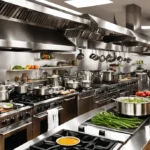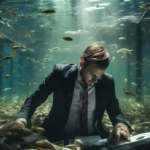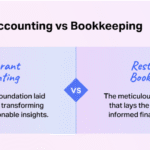Clare Benson is a contemporary artist based in Arizona who grew up in Michigan. Benson’s work explores rural landscapes, hunting, and identity. We chose to speak with Benson because we felt her work, post election, showed a unique perspective into rural America through exploring gender roles, our relationships with the land, and climate change. Benson has a great ability to speak through a gracefully and poetic, yet poignant voice which gives us both specificity while leading us to our own conclusions. Thank you for speaking with us Clare.
From your bio I’ve learned that you have lived in a broad range of climates, from growing up in rural Northern Michigan, living north of the arctic circle and now currently residing in Phoenix Arizona. I’m curious, what was your relationship to the natural world growing up? How has it changed as you have experienced new and contrasting environments?
When I was growing up, I can remember that my mother had a great respect and reverence for the natural world. She idealized nature and the notion of living off the land, having spent much of her own life in the suburbs of Indianapolis.
I was very close with her, and after her death, when I was eleven years old, I found myself seeking quiet and wild spaces. I spent a lot of time in the forest behind our home, and at the old creek across the street, which ran down into Lake Huron. Now as an adult, having lived in several different climates, I’ve developed a greater understanding of nature, its cycles and complexities; its changing seasons (which exist even in a places like southern Arizona and within the Arctic Circle).
For the longest time, I would tell people, ‘I’m not really a political person…’ and ‘my work isn’t political.’ In recent years, I’ve come to realize that both of those were naïve and passive statements; in saying those things, I was avoiding controversy—avoiding the inevitable need to take a stand on major issues. The current political climate has surely been shining a new light on how I see the world, and how I see my work fitting into the critical conversations of this time. Though my work and approach have not shifted in any major way, my relationship to the work is constantly evolving, and I see things in my work that I hadn’t seen before. And so the language I use to describe the work evolves, as do the contexts that I choose to place the work within.Lately, I have been incredibly inspired by work that speaks to current global issues. I feel strongly compelled to be part of this movement, to offer that same level of inspiration to people around the world.
I believe that now is the time for art to speak about major issues, whether subtly or directly, because art is one of the most powerful and universal languages. Since now is such a highly charged political time, I think that all art will be seen in that context, whether it is the intention of the artist or not; it seems unavoidable at this point, because it is on the minds of so many people, and constantly surrounding us. I have heard from some artists who say they want to create work that allows people a kind of escape from these political conversations. In my mind, even that escape from the political becomes something political. In my art communities, I see strong efforts to broaden the scope of our communal voices, to create platforms that invite artists from many different cultural, geographical, and socio-economic backgrounds. I see many artists working to come together, for support and encouragement; for opportunities to learn from each other, and grow stronger together.
In your photo series The Shepherd’s Daughter you seem to be portraying yourself as both the hunter and the prey. Tell me more about your process in staging these photographs and your thoughts about the roles you embody in this narrative?
The Shepherd’s Daughter looks at the rich and complex tradition of hunting in my family—how it has evolved over time, and now my own relationship to (and understanding of) this tradition, to ancestors, and to this landscape; all of which make up my own personal mythologies, and identity.
In staging these photographs, I am embodying my father, my grandmother, and great-grandmother, who all hunted on that northern island where I grew up, and in doing so, provided sustenance for their families. I am embodying the connection that these ancestors, and those before them, have had with the land and nature, as well as the disconnection that has come with the shifting of this tradition.
In one of the iconic images from this series, I carry the head of an African kudu on my back, as if freshly hunted, amidst the wintry, forested landscape of the Midwestern United States. The two landscapes are worlds apart. Taxidermied heads and hides embody our desire as humans to freeze time, to conquer nature, to defy the notion of mortality, to control the uncontrollable. These staged scenes embody a kind of homecoming, with ritual and ceremony; an effort to connect the disconnected; to understand the quiet and sacred nature of what hunting has been, and in some cases what it continues to be.
You highlight the dynamism of the Michigan landscape in this series as we see barren snowscapes, rich brown soil and lush green forests, it is clearly a place with seasonal changes. How has living in a desert landscape with only a few seasonal changes affected your perspective and interests as a photographer?
Interestingly enough, I was living in the desert when I started creating this series. I was studying in Tucson, Arizona, and would go home during breaks from school. Having grown up experiencing the seasonal shifts in Michigan, those cycles had become somewhat normalized. It wasn’t until I moved to the desert, and then traveled home, that I began to recognize how extreme those shifts actually were. I gained a greater respect for those cycles of nature, and the nuances that were inherent in that landscape.
For as long as I can remember, I watched my father bring home the animals that he hunted, and ate the meat that those animals provided. At 12 years old, I went through a hunter’s safety course that was offered to all the students at our school. My father taught me how to shoot a bow and arrow as well as a hunting rifle, how to identify tracks in the snow or dirt, taught me where to aim, how to skin the animal and process the meat. I went on several fishing trips growing up, and had many opportunities to hunt once I had reached the legal age, though I have no memory of actually hunting. When I was growing up, hunting was something that was mostly done by boys and men. I saw several examples of women who would hunt as well, but didn’t have a strong desire at the time to participate, and focused much more on school and extracurricular activities.I have a great respect for what hunting is, in its most traditional and primal form, and I believe that it should be done with respect and gratitude, as a means of survival, and with every effort to use as much of the animal as possible.All of this requires a great deal of time, care, and effort—resources that many contemporary, and particularly urban, communities are trying to conserve and funnel into other areas of life. The current ethical and environmental dilemmas associated with hunting make for a very complex conversation, and there are many aspects to consider. The advancement of technology is a factor, as well as consumerism, and capitalism.In regards to ethics, I have noticed instances where hunting seems to be misperceived as being on the same level, and in connection with, the dilemmas of animal agriculture, meat/animal product industries, and the ethical treatment of animals. Hunting, for me, is very separate from these things. It allows for a much healthier consumption of meat, both in the quality and the quantity that is consumed. It is also important in regulating populations of animals in specific areas. Hunting regulations vary from place to place, and from season to season, with constant consideration for the changing populations of animals.
It should be understood that as humans continue to develop land for modern living, constructing sewer systems, roads, infrastructure, dams, mines, underground pipelines, and the like—all of nature, with its many systems and life forms, will be affected. Our ability to live and thrive as modern-day humans, amidst a living and thriving natural world, has become something that is not as seamless or as simple as we might hope.
Are you working on any new projects? What directions do you see your work moving toward?
One of my more recent projects, based in Arctic Scandinavia, considers many of the same themes that I have worked with previously. Since 2014, I have been working with space scientists and indigenous reindeer herders in this northern region, developing work that considers our complex connections to the natural world, to the shifting landscape and to the sky, to traditions that evolve over time. I see my work continuing along this trajectory of themes and relationships. Parts of the newest work are contributing more directly to science, and parts are beginning to tie naturally into issues of climate change.









